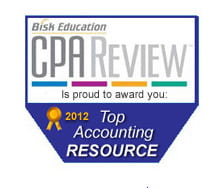Berkshire Hathaway’s Valuation Based on Price to Book Value Ratio
In Warren Buffett’s 2010 Letter to Shareholders released on February 26, 2011, Buffett states that he uses the “understated proxy for intrinsic value — book value” to measure Berkshire’s performance. His annual reports every year highlight Berkshire’s annual percentage change in book value per share vs. the S&P 500 with dividends included. He also disparages the use of income per share since Berkshire’s net income can vary greatly depending upon when he decides to realize gains or losses in Berkshire’s investment portfolio. Therefore, instead of comparing Berkshire’s current price to earnings ratio with its historical average to determine if Berkshire is undervalued, a better comparison would focus on its price to book value ratio.
In the table below, I show for each year from 1985 through 2010, Berkshire’s book value per share and market price per share of its class A shares, as well as its annual price to book value ratio. From this table it can be seen that Berkshire’s 2010 yearend price to book value ratio of 1.25 is 23% below its average of 1.63 over the past 26 years, and 44% below its peak value of 2.23 achieved in 1995. Indeed, in only two of the past 26 years has this ratio been lower than its 2010 value of 1.25. (In 2009 the ratio equaled 1.17 as the economy was beginning to recover from the financial crisis, and in 1987 the ratio equaled 1.19 after the Stock Market Crash of 1987.)
Utilizing Warren Buffett’s preferred proxy of intrinsic value of book value per share, the yearend price to book value per share of Berkshire indicates that it is undervalued. (Using Berkshire’s closing price of 127,550 on February 25 and the 2010 yearend book value of 95,453, the current price to book value ratio would equal 1.34, which still represents an 18% discount from its historical average of 1.63. Of course, the current book value of Berkshire can also be assumed to exceed the 2010 yearend level, which in turn would lower this ratio.)
| Year | Book Value | Price | P/Book Value | ||||
| 2010 | 95,453 | 119,100 | 1.25 | ||||
| 2009 | 84,487 | 99,200 | 1.17 | ||||
| 2008 | 70,530 | 96,600 | 1.37 | ||||
| 2007 | 78,008 | 141,600 | 1.82 | ||||
| 2006 | 70,281 | 109,990 | 1.57 | ||||
| 2005 | 59,377 | 88,620 | 1.49 | ||||
| 2004 | 55,824 | 87,900 | 1.57 | ||||
| 2003 | 50,498 | 84,250 | 1.67 | ||||
| 2002 | 41,727 | 72,690 | 1.74 | ||||
| 2001 | 37,920 | 75,600 | 1.99 | ||||
| 2000 | 40,442 | 71,000 | 1.76 | ||||
| 1999 | 37,987 | 56,100 | 1.48 | ||||
| 1998 | 37,801 | 70,000 | 1.85 | ||||
| 1997 | 25,488 | 46,000 | 1.8 | ||||
| 1996 | 19,011 | 34,100 | 1.79 | ||||
| 1995 | 14,426 | 32,100 | 2.23 | ||||
| 1994 | 10,083 | 20,400 | 2.02 | ||||
| 1993 | 8,854 | 16,325 | 1.84 | ||||
| 1992 | 7,745 | 11,750 | 1.52 | ||||
| 1991 | 6,437 | 9,050 | 1.41 | ||||
| 1990 | 4,612 | 6,675 | 1.45 | ||||
| 1989 | 4,296 | 8,675 | 2.02 | ||||
| 1988 | 2,975 | 4,700 | 1.58 | ||||
| 1987 | 2,477 | 2,950 | 1.19 | ||||
| 1986 | 2,073 | 2,870 | 1.36 | ||||
| 1985 | 1,644 | 2,470 | 1.5 | ||||
| Avg. = 1.63 | |||||||




Can you compare Berkshire’s book value from 1985 to 2010 to the S&P book value for the same years? That would be comparing apples to apples.
Thank you,
Garry Lakin, Naples FL
Warren Buffett, in his letter to shareholders, compares the annual change in Berkshire’s book value to the change in the value of the S&P 500 index, including dividends. He does this every year. His statement that Berkshire’s book value is an understated proxy for intrinsic value, leads to the analysis of Berkshire’s price to book value ratio.